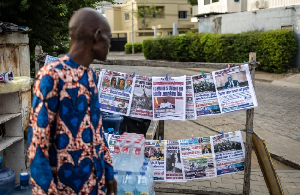There are enough malaria vaccines (RTS,S) to immunise children under five years in the Ajumako Enyan Essiam District (AEE) in the Central Region, the District Disease Control Officer, DDCO Emmanuel Sarfo has stated.
“There are more than enough of the RTS, S for all children under two who are yet to be vaccinated in the district,” he emphasised.
This comes after some parents complained of a possible shortage after the first jab of the malaria vaccine for their children.
For Mr Sarfo, there were sufficient supply of the vaccine for the district and beyond, urging parents to rather bring their babies for the vaccination than entertaining the fear that there would be a shortage of the vaccine.
The World Health Organisation (WHO) in collaboration with the Ministry of Health on April 30, 2019 officially launched the world’s first malaria vaccine in a landmark pilot programme.
This breakthrough in malaria control caps a 30-year effort to develop a vaccine with proven results to help prevent malaria in young children.
Ghana is one of the three African countries in which the vaccine, known as RTS, S, is made available to children from six months up to two years of age.
Mr Sarfo noted that “the vaccine programme remains on track despite the outbreak of the coronavirus and that it is safe,” and urged parents who had refused to allow their children to be vaccinated to reconsider their decision.
The District Director of Health for the AEE, Stephen Tietoh, for his part, cautioned that malaria still remained one of the most devastating diseases though Ghana had made significant gains over the years.
Giving trends of malaria cases from 2015-2020 in the district, he indicated that his facility recorded 53,597; 48,954; 49,196; 53,913; 48,968 and 38,369 of all Out Patient Department (OPD) cases in the five-year period respectively.
For the number of OPD malaria cases for children under five years, he said, the district recorded a total of 17,518 in 2015; 15,563 in 2016; 15,005 in 2017; 16,275 in 2018; 14,873 in 2019 and 11,635 in 2020.
Attributing the gains to the strict implementation of the test before treatment policy which implied that suspected cases were confirmed before treatment, Mr Tietoh mentioned that, the strategy had been one of the potent ways to the decline of morbidity and mortality of malaria cases in the area.
He added that the district had also introduced some interventions including outreach programmes, testing and treatment, as well as education and sensitisation of the populace about the prevention of the disease.
“At two instances, two children almost lost their lives at our facility after failing to test for malaria before vaccination and the move heightened the disease and they almost died,” he recounted, adding that the “vaccine is a complementary malaria control which is to be added to the core package of WHO-recommended measures for malaria prevention.”
The other malaria preventive measures, Mr Tietoh mentioned, included the routine use of insecticide-treated bed nets, indoor spraying with insecticides, timely use of malaria testing and treatment and orientation among stakeholders to enable them to prioritise the fight against malaria.
Health News of Monday, 26 April 2021
Source: ghanaiantimes.com.gh













